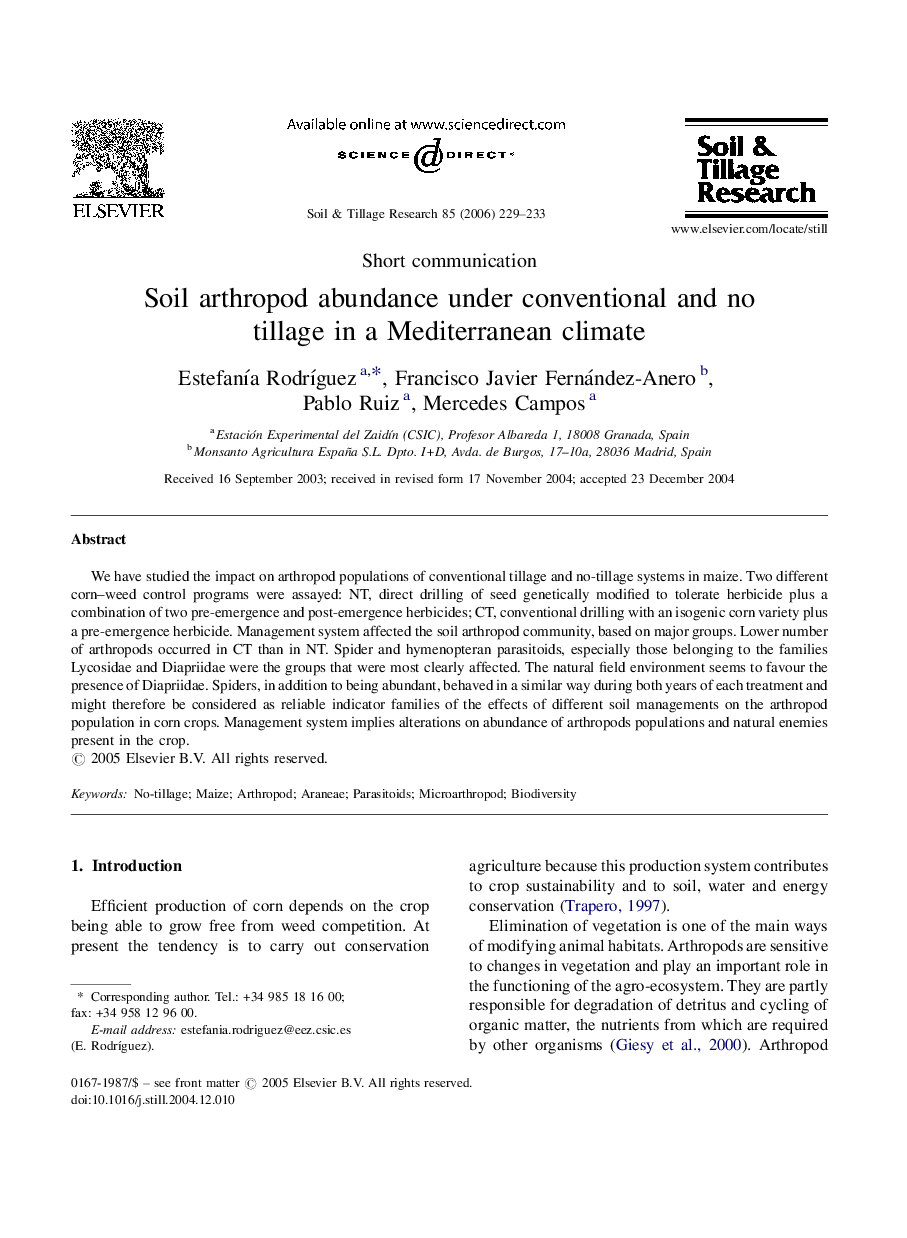| Article ID | Journal | Published Year | Pages | File Type |
|---|---|---|---|---|
| 306939 | Soil and Tillage Research | 2006 | 5 Pages |
We have studied the impact on arthropod populations of conventional tillage and no-tillage systems in maize. Two different corn–weed control programs were assayed: NT, direct drilling of seed genetically modified to tolerate herbicide plus a combination of two pre-emergence and post-emergence herbicides; CT, conventional drilling with an isogenic corn variety plus a pre-emergence herbicide. Management system affected the soil arthropod community, based on major groups. Lower number of arthropods occurred in CT than in NT. Spider and hymenopteran parasitoids, especially those belonging to the families Lycosidae and Diapriidae were the groups that were most clearly affected. The natural field environment seems to favour the presence of Diapriidae. Spiders, in addition to being abundant, behaved in a similar way during both years of each treatment and might therefore be considered as reliable indicator families of the effects of different soil managements on the arthropod population in corn crops. Management system implies alterations on abundance of arthropods populations and natural enemies present in the crop.
